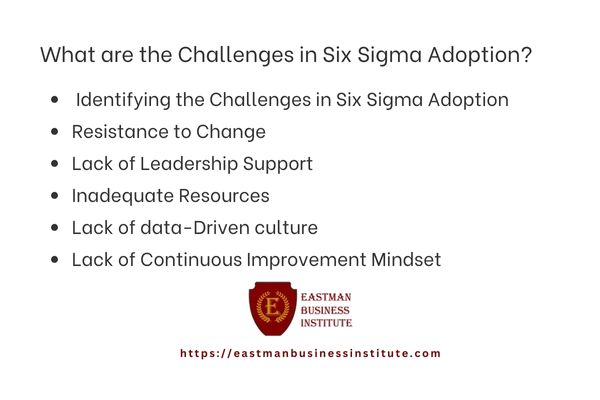In a world where the quest for excellence and precision defines the success of giants, the transformative story of how Jack Welch transformed GE With Six Sigma stands as a beacon of visionary leadership and strategic acumen. This narrative unfolds against the backdrop of an era marked by the pursuit of quality management, showcasing Welch’s commitment to elevating GE’s operational efficiency and market value.
Through the adoption of virtual classes, specialized project management training, and the integration of Six Sigma online courses, Welch not only enhanced GE’s internal processes but also significantly boosted its share price. His emphasis on root cause analysis training and the deployment of virtual instructor-led training sessions exemplified a forward-thinking approach to corporate education.
Read more about How Jack Welch Transformed GE With Six Sigma

This exploration of Sigma training and certification unfolds a legacy of groundbreaking innovation that surpassed conventional business norms, establishing a new benchmark for corporate excellence.
More Things To Know About How Jack Welch Transformed GE With Six Sigma

Understanding Jack Welch
Let’s start by exploring Jack Welch’s early life and career, shedding light on the experiences that shaped his leadership style. By understanding his background and the journey that led him to become the influential leader of GE, we can gain valuable insights into his management approach.
This knowledge will serve as a foundation for unraveling the impact of Welch’s leadership on the implementation of Six Sigma at GE.
Early Life and Career
The early life and career of Jack Welch provide insight into the foundational experiences that shaped his leadership style. Jack Welch joined General Electric (GE) in 1960 and rose through the ranks to become the CEO in 1981. His successful implementation of Six Sigma at GE revolutionized the company’s management philosophy and set a new standard for operational efficiency.
Welch’s hands-on approach and emphasis on empowering senior executives to make decisions played a crucial role in GE’s transformation. By focusing on data-driven decision-making and continuous improvement, Welch instilled a culture of excellence and accountability that propelled GE to new heights during his tenure. His early experiences and career progression at GE laid the groundwork for his future success as a visionary leader.
Leadership Style
Transitioning from his early career experiences at GE, Jack Welch’s leadership style was characterized by a relentless pursuit of operational excellence through the implementation of Six Sigma methodologies.
Welch’s leadership was marked by a focus on driving change within the organization, emphasizing the importance of data-driven decision-making and continuous improvement. His hands-on approach to leadership involved active engagement in projects, fostering a culture of accountability and results-oriented performance.
Welch’s implementation of Six Sigma not only revolutionized GE’s processes but also had a profound impact on the company’s culture, instilling a mindset of efficiency and quality throughout the organization.
His leadership style, centered on strategic vision and execution, left a lasting legacy on GE and influenced the way many organizations approach leadership and management practices.
Understanding Six Sigma
Six Sigma methodology, pioneered by General Electrics under Jack Welch’s leadership, focuses on maximizing efficiency and process improvement within a corporation. This approach emphasizes the reduction of defects and variations in processes to enhance quality and drive better results.
By integrating statistical analysis and data-driven decision-making, Six Sigma ensures that organizations operate at optimal levels, meeting customer expectations consistently. Leaders within the company play a crucial role in championing Six Sigma initiatives fostering a culture of continuous improvement and excellence.
Through a structured approach to problem-solving and a commitment to measuring outcomes, Six Sigma has become synonymous with driving operational efficiency and achieving sustainable success in today’s competitive business landscape.
The Five Steps of Six Sigma: Define, Measure, Analyze, Improve, Control (DMAIC)
To implement Six Sigma effectively, you must follow the five steps known as Define, Measure, Analyze, Improve, and Control (DMAIC). Each step plays a crucial role in enhancing processes and reducing defects within an organization. Here’s a breakdown of the DMAIC process:
- Define: Clearly outline the problem or opportunity for improvement.
- Measure: Quantify the current process performance and establish baseline metrics.
- Analyze: Identify the root cause of defects or inefficiencies within the process.
- Improve: Implement solutions to address the root cause and enhance the process efficiency.
Jack Welch’s Introduction of Six Sigma at GE
When Jack Welch introduced Six Sigma at GE, he made a strategic decision that would revolutionize the company’s operations.
There were challenges and resistance to this new methodology. However, Welch’s persistence and vision ultimately led to the successful implementation of Six Sigma across GE.
The Decision to Implement Six Sigma
As the leader of General Electric, Jack Welch introduced Six Sigma to drive operational excellence and foster a culture of continuous improvement. The decision to implement Six Sigma was a strategic move aimed at enhancing the company’s performance through the systematic application of the six sigma methodology.
By training employees as black belts in Six Sigma principles, GE aimed for significant cost reduction and efficiency gains across the business. Welch’s visionary leadership played a crucial role in championing this quality improvement initiative, emphasizing the importance of data-driven decision-making and customer-centric approaches.
This adoption of Six Sigma not only transformed GE’s processes but also set a new standard for quality management practices in the business world.
Initial Challenges and Resistance
The introduction of Six Sigma at GE under Jack Welch’s leadership faced initial challenges and resistance. Welch’s strong leadership played a crucial role in overcoming these obstacles.
Initially, employees were resistant to change due to the new training requirements and fear of increased management control. The cost of implementing Six Sigma was also a concern, as it required significant investment. Additionally, the existing culture of innovation at GE had to be balanced with the structured approach of Six Sigma.
Despite these challenges, Welch’s determination and effective communication helped shift employee mindsets towards embracing Six Sigma as a tool for continuous improvement. Through strategic guidance and support, Welch successfully navigated the initial hurdles, paving the way for Six Sigma to flourish at GE.
Implementation of Six Sigma at GE
Let’s explore the Training and Certification Programs that were crucial for employees, ensuring everyone was on the same page.
Project Selection and Execution will be discussed to highlight the practical application of Six Sigma methodologies.
Training and Certification Programs
To effectively implement Six Sigma at GE, you should consider enrolling in training and certification programs. These programs provide in-depth knowledge of the six sigma methodology, equipping you with the skills needed to lead and execute six sigma projects successfully.
By becoming a certified green belt, you can actively contribute to the organization’s six sigma implementation under the guidance of effective leadership. Through these training and certification programs, you’ll learn how to identify improvement opportunities, analyze data, and implement solutions that drive tangible results.
Their involvement in a Six Sigma project can significantly impact GE’s operational efficiency and quality standards, making them a valuable asset in the company’s pursuit of excellence.
Project Selection and Execution
Consider project prioritization and execution crucial steps in the successful implementation of Six Sigma at GE. The Sigma methodology focuses on improving customer satisfaction, enhancing performance, and optimizing business operations. When selecting projects, GE analyzed data to identify areas with the highest impact on customer experience and operational efficiency.
Execution involved cross-functional teams working together to implement process improvements and measure outcomes. Ensuring alignment with strategic goals was paramount in driving successful project outcomes.
The table below illustrates the key aspects of project selection and execution within the Six Sigma framework at GE:
| Project Selection and Execution | ||||
|---|---|---|---|---|
| Identify High Impact Areas | Analyze Data | Improve Processes | Measure | |
| Cross-functional Collaboration | Implement | Improvements | Measure Outcomes | Strategic Alignment |
Impact of Six Sigma on GE’s Performance
Explore the quantitative and qualitative impacts of Six Sigma on GE’s performance: Significant cost savings and revenue growth alongside improved customer satisfaction and employee engagement.
These points highlight the transformative power of Six Sigma in enhancing various aspects of GE’s operations and overall success. Get ready to uncover how these measurable and perceptible improvements reshaped the company under Jack Welch’s leadership.
Quantitative Improvements: Cost Savings and Revenue Growth
GE achieved remarkable cost savings and revenue growth through the implementation of Six Sigma methodologies under Jack Welch’s leadership. By focusing on operational excellence and utilizing Six Sigma principles, GE was able to streamline processes, reduce defects, and enhance overall efficiency.
This resulted in significant cost savings as waste was minimized, and operations became more streamlined and effective. Moreover, the emphasis on quality and customer satisfaction through Six Sigma led to improved products and services, consequently driving revenue growth for GE.
These quantitative improvements directly impacted GE’s financial performance, boosting profitability and market competitiveness. Through a dedicated commitment to Six Sigma, GE, under Jack Welch’s direction, was able to achieve substantial cost savings and revenue growth, solidifying its position as a leader in the industry.
Qualitative Improvements: Customer Satisfaction and Employee Engagement
Continuing with the improvements in customer satisfaction and employee engagement due to Six Sigma at GE, you witnessed a shift towards a culture of quality and efficiency. Under strong leadership, Six Sigma implementation at GE not only met customer expectations but exceeded them, leading to a competitive advantage in the market.
This focus on quality not only improved customer satisfaction but also boosted employee engagement, as employees felt empowered to deliver top-notch results. The emphasis on quality within corporate cultures became a driving force for GE’s success, aligning with customer expectations and enhancing overall performance.
Through Six Sigma, GE was able to create a lasting impact on both customer satisfaction and employee engagement, solidifying its position as a quality-driven industry leader.
Criticisms and Controversies
You may have heard criticisms surrounding the implementation of Six Sigma at GE, but what were they really about?
Jack Welch, the driving force behind Six Sigma’s adoption at GE, also faced responses to these criticisms.
Let’s uncover the controversies and how Welch navigated them.
Criticisms of Six Sigma Implementation at GE
Although some critics have raised concerns, Six Sigma implementation at GE has faced criticisms and controversies. Some of the main criticisms revolve around the impact on operational efficiency, the adequacy of planning for Six Sigma projects, and the allocation of resources.
Critics argue that the strict focus on Six Sigma may lead to a neglect of other important aspects of business practices. Additionally, there have been debates about whether the methodology is suitable for all types of projects and industries. Some critics have also questioned the extent of involvement required from the chief executive and top management in Six Sigma initiatives.
Addressing these criticisms is essential to ensure that Six Sigma implementation at GE continues to drive positive results and sustainable improvements.
Jack Welch’s Response to Criticisms
One key aspect of Jack Welch’s response to criticisms surrounding Six Sigma implementation at GE involved addressing concerns about operational efficiency, project planning adequacy, and resource allocation.
As an executive leading a multinational corporation, Welch recognized the importance of ensuring that Six Sigma projects were executed at the highest level of quality. In response to criticisms about project planning, Welch emphasized the need for thorough analysis and strategic decision-making to drive successful outcomes across various industries.
He prioritized efficient resource allocation to maximize the impact of Six Sigma initiatives. By addressing these concerns head-on, Welch demonstrated a commitment to refining processes and enhancing overall operational effectiveness within GE through Six Sigma methodologies.
Legacy of Jack Welch and Six Sigma at GE
Explore how Six Sigma practices have continued at GE even after Welch’s tenure, highlighting the lasting impact of his leadership.
Consider how GE’s success with Six Sigma has influenced other companies and industries, shaping modern approaches to quality management.
Reflect on the enduring legacy of Jack Welch and Six Sigma, underscoring their pivotal role in transforming organizational cultures worldwide.
Continuation of Six Sigma Practices Post-Welch
Continue implementing Six Sigma practices to uphold Jack Welch’s legacy and drive operational excellence at GE.
By integrating Six Sigma methodologies into your business strategies, you can enhance efficiency and quality. Assigning a master black belt to oversee Six Sigma projects ensures their success by utilizing statistical tools and process mapping. This structured approach identifies areas for improvement and optimizes processes, leading to increased profitability and customer satisfaction.
Seize opportunities to streamline operations and reduce defects, maintaining GE’s reputation for excellence. Embracing Six Sigma principles post-Welch solidifies a culture of continuous improvement, fostering innovation and sustainable growth. Stay committed to these practices to honor Welch’s impactful legacy and propel GE toward continued success.
Influence on Other Companies and Industries
By demonstrating the effectiveness of Six Sigma methodologies, Jack Welch’s leadership at GE influenced numerous companies and industries. Business leaders across various sectors adopted Six Sigma practices to enhance their operations.
In the manufacturing industry, the implementation of Six Sigma projects led to world-class quality standards and substantial cost savings. Welch’s legacy extended beyond GE, as other organizations recognized the powerful tools Six Sigma offered in improving efficiency and driving success.
Companies worldwide embraced this methodology to streamline processes, reduce errors, and deliver exceptional products and services. Welch’s impact on the business world remains profound, with his emphasis on quality and continuous improvement setting a benchmark for excellence that continues to inspire organizations globally.
Frequently Asked Questions
How Did Jack Welch’s Leadership Style Outside of Implementing Six Sigma Contribute to Ge’s Transformation?
Your question about Jack Welch’s leadership style beyond Six Sigma is crucial. Welch’s strategic vision, emphasis on meritocracy, and relentless pursuit of excellence were pivotal in GE’s transformation, shaping a culture of innovation and success.
What Were Some of the Challenges Faced During the Implementation of Six Sigma at Ge?
Implementing Six Sigma at GE faced challenges like resistance to change, lack of employee buy-in, and initial learning curve. Overcoming these obstacles required strong leadership, clear communication, and continuous support from management.
How Did GE Measure the Success of Six Sigma Implementation and Its Impact on Company Performance?
You measured success at GE by tracking cost savings, quality improvements, and customer satisfaction. The impact was evident in increased efficiency, higher profits, and improved products. Six Sigma transformed GE by driving excellence and growth.
What Were Some of the Specific Areas Within GE That Saw the Most Significant Improvements Due to Six Sigma?
In GE, specific areas like manufacturing, customer service, and supply chain management saw significant improvements due to Six Sigma. Processes became more efficient, quality increased, and costs decreased, leading to overall enhanced performance.
How Did Jack Welch’s Departure From GE Affect the Continued Use and Integration of Six Sigma Within the Company?
After Jack Welch left GE, the integration of Six Sigma continued but evolved under new leadership. You had to adapt to new strategies and approaches, ensuring Six Sigma’s principles remained ingrained in the company’s culture and operations.
| Related Term | Definition |
|---|---|
| Lean Six Sigma | A methodology that combines the waste reduction principles of Lean with the process improvement tools of Six Sigma to enhance business efficiency and performance. |
| Six Sigma Green Belt | An individual certified at the Green Belt level in Six Sigma, equipped with the skills to lead and support improvement projects within an organization. |
| Six Sigma Training | Training programs designed to teach the Six Sigma methodology and tools for improving business processes and reducing defects. |
| Green Belt Training | Specific training aimed at achieving the Green Belt level in Six Sigma, focusing on data analysis, project management, and process improvement. |
| Chief Executive Officer (CEO) | The highest-ranking individual in a company or organization, responsible for making major corporate decisions, managing the overall operations and resources. |
| Virtual Classroom Training | Online training sessions conducted in a virtual environment that simulates a traditional classroom setting, allowing for real-time interaction between instructors and participants. |
| Lean Six Sigma Training | Training programs focused on the Lean Six Sigma methodology, combining lean manufacturing principles with Six Sigma techniques for process improvement. |
| Self-Paced Online Training | An online learning format where learners can progress through the course material at their own speed, without real-time instruction. |
| Black Belt Training | Advanced training for achieving the Black Belt level in Six Sigma, indicating expertise in leading complex improvement projects and mentoring Green Belts. |
| Process Management | The practice of aligning processes with an organization’s strategic goals, designing and improving processes to increase efficiency and reduce costs. |
